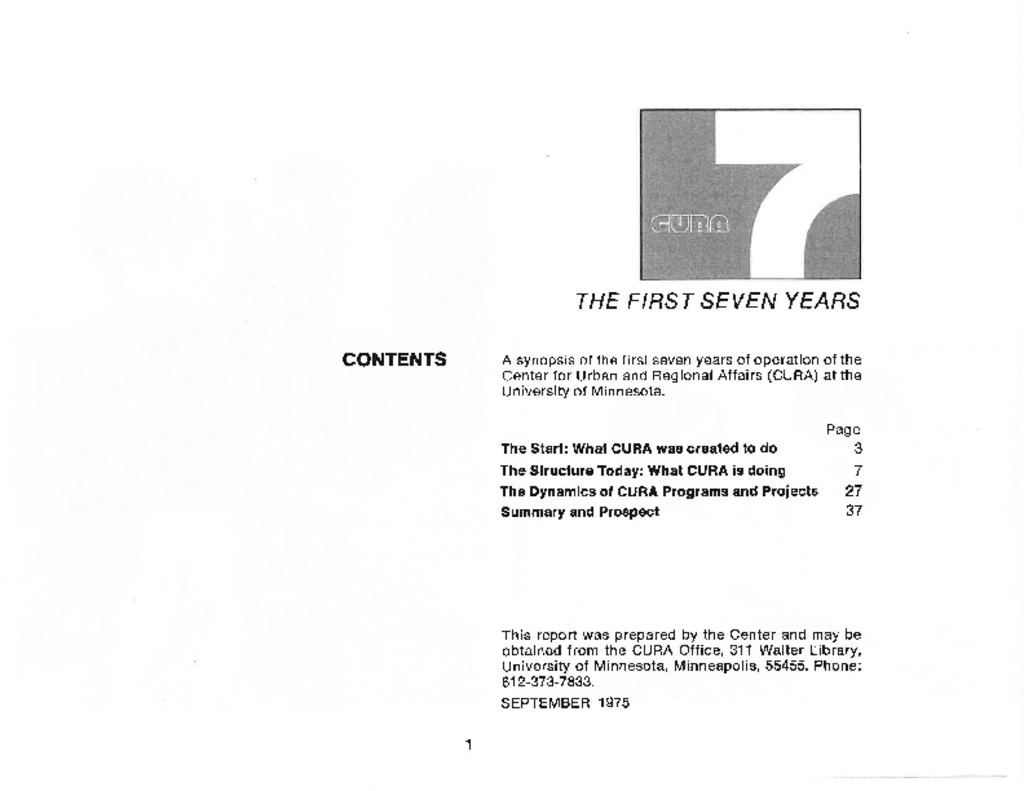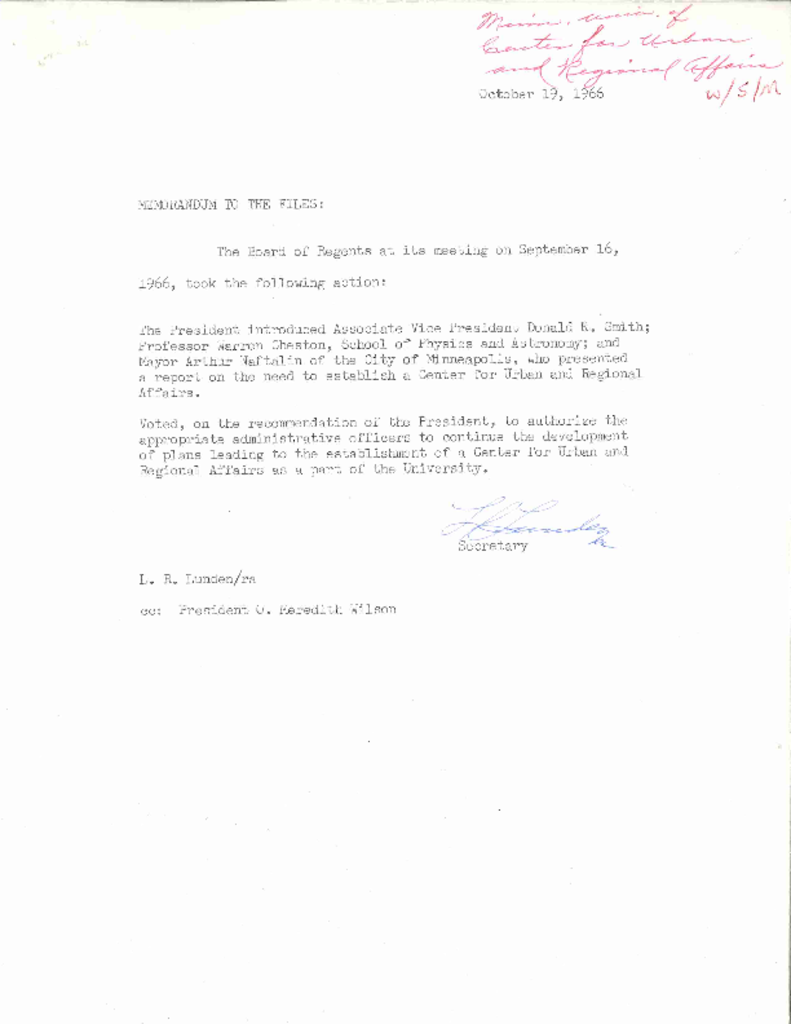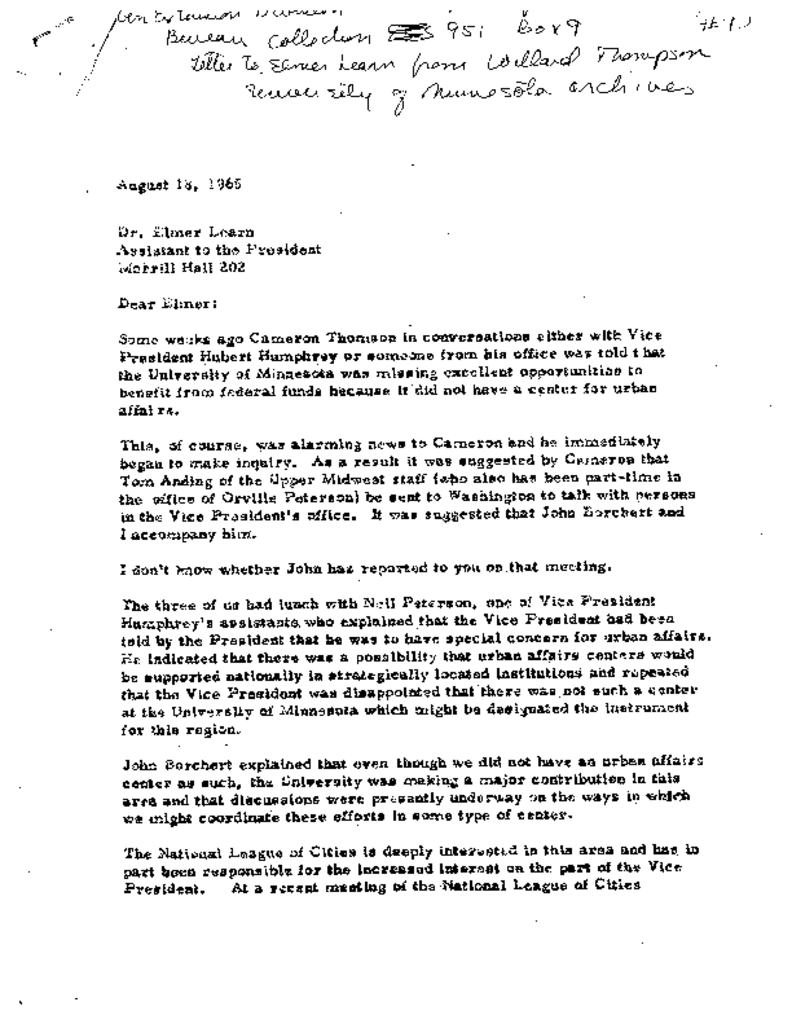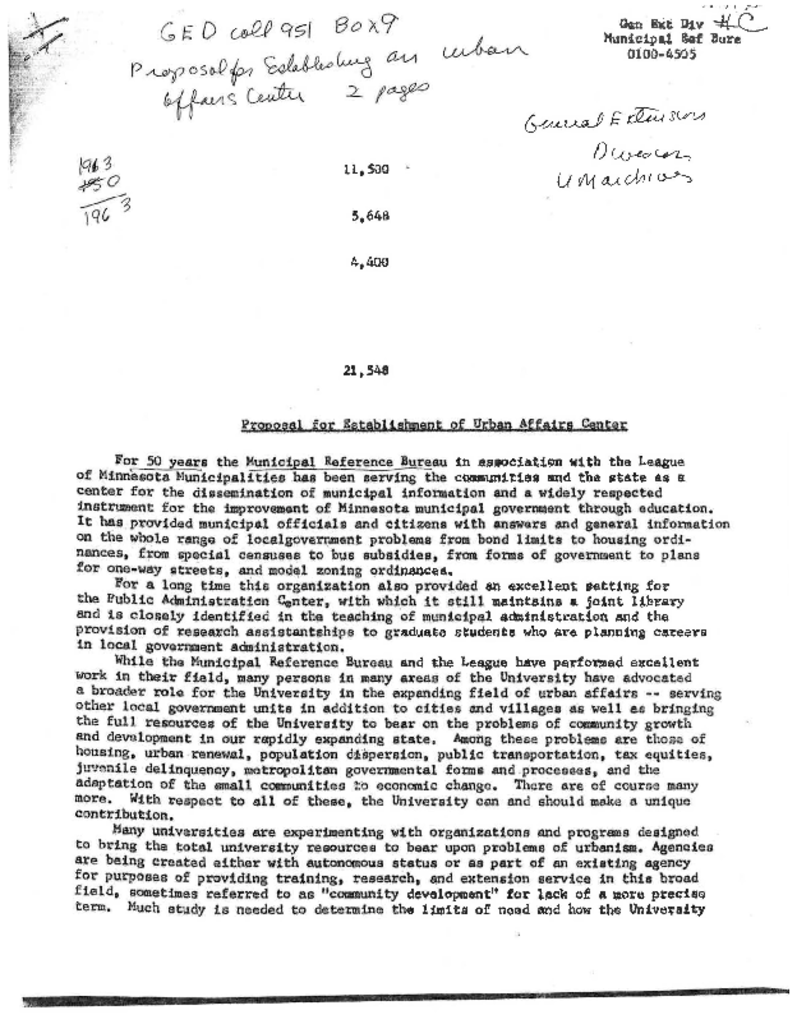To celebrate the 50th anniversary of the Center for Urban and Regional Affairs, we have carefully selected a collection of historical documents that reflect the early life of CURA. The documents include photos, letters, proposals and articles that emphasize the importance of establishing a place at the University of Minnesota to address the so-called “Urban Crisis” of the late 1960s in the Twin Cities. At its core, CURA was founded with the intention to connect the resources of the University of Minnesota with the interests and needs of urban communities and the region for the benefit of all. Through this collection, we see that CURA’s foundational intentions and purpose have remained a significant part of who we are today.
“Why didn’t we know? And what should we be doing about it?”
- Will Craig, CURA Assistant Director 1970-1998 and Associate Director 1999-2014
When we asked CURA’s former Assistant Director and then Associate Director Will Craig for his perspective on CURA’s founding, he offered up the above quote that refers to the questions being asked by members of the legislature after the civil unrest of the late 1960s. It encapsulates the thinking in many of the foundational documents that we found and provides a framework for the original ideas circulating in the early years of CURA.
Why didn’t we know?
Although municipal research and general information was being disseminated by the Municipal Reference Bureau throughout the 1960s, the Twin Cities region was lacking a center that focused specifically on urban affairs. The civil unrest in 1966 and 1967, primarily along Plymouth Avenue in North Minneapolis, was a wakeup call that forced city, state, and university officials to confront large, societal issues such as poor housing, poverty, families in disarray, a stagnating economy, crime, and a crumbling infrastructure.
What should we be doing about it?
The University of Minnesota and CURA saw the unrest as an opportunity to help address the issues and needs of the Twin Cities region and beyond. With research and education, CURA would incubate new programs to make the University more responsive to community needs, additionally increasing the interaction between faculty, students, and anyone dealing directly with public problems.
CURA has certainly evolved since the 1960s, but you can see antecedents to many of our current programs in our founding tactics and programs. Today, many of our successful programs continue to be needed–what seemed to be root problems in the past have turned out to be symptoms of more fundamental adjustments that must be made within local communities and beyond. Through our efforts to share research and knowledge between the University and the community, we are continuously evolving to benefit all.





